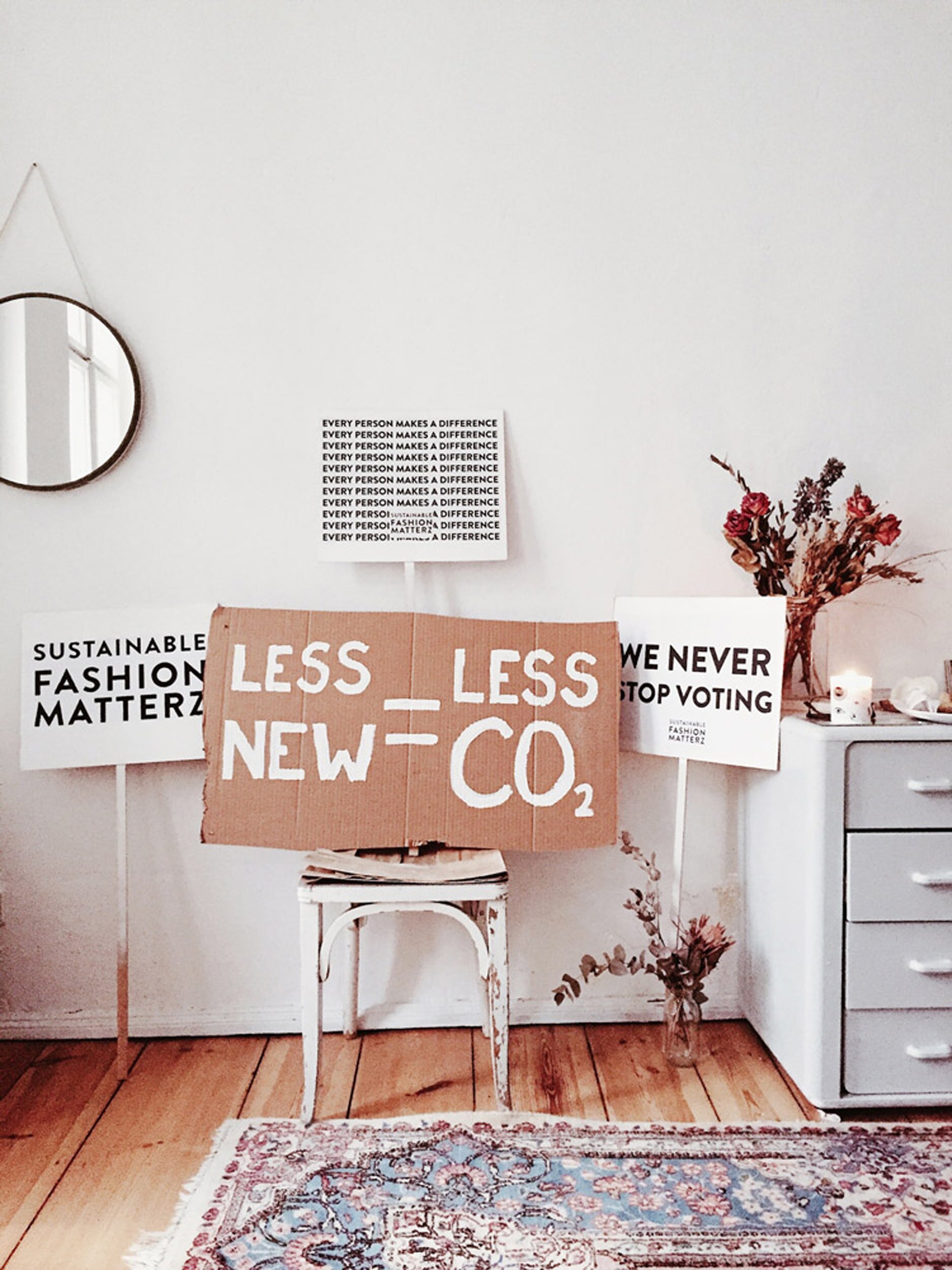
The Environmental Impact of Plastic Hangers in Fashion
By Dr Alana M James
Over the last century, fashion’s increasing reliance on plastic has contributed significantly to the environmental impact caused by the industry as a whole. This unhealthy relationship was facilitated by the growth of the oil industry in the early 1900’s meaning that fibres such as acrylic, polyester and nylon were being widely produced for fashion purposes.
Currently, 65% of all garments produced are made from synthetic fibres, meaning that they not only rely on oil as a finite resource for their production, but that disposal at the product’s end-of-life, becomes a much bigger challenge. However, beyond materiality the fashion industry also uses large quantities of plastic, much of which goes largely undetected in their use of packaging and in-store visual merchandising. One of the largest, hidden sources of plastic use in fashion is in garment hangers, just think how many we all have in our wardrobes alone. When considering this in the context of the fashion industry, where 130.6 billion items of clothing were produced in 2019, the scale of this issue starts to become a priority challenge for the industry going forward.
“This was previously recognised by luxury fashion designer Roland Mouret who described garment hangers as ‘the plastic straws of the fashion industry’.”
The problem with plastic hangers
Garment hangers in both retail and domestic settings are commonplace products used by industry and consumers alike, but in the shadow of fashion garments their impact on the planet is rarely considered. As a by-product of fashion manufacturing, it is the volume of garments being produced and purchased in the UK market which is increasing the number of hangers utilised annually.
Parallels can be drawn between the use of plastic hangers and other single-use everyday items such as plastic bottles, carrier bags and drinking straws. This was previously recognised by luxury fashion designer Roland Mouret who described garment hangers as ‘the plastic straws of the fashion industry’. He also recognised the lack of conversation and recognition around the impact of these simple everyday products, calling it fashion’s ‘dirty little secret’. However, the key difference between these everyday plastic items is the recognition of the damage they are causing to the world around us. Plastic straws, for example have recently been banned in the UK (October 2020) for the environmental damage they cause through production and disposal. While society's awareness of items such as straws and bottles is increasing, very little is known about the millions of plastic garment hangers used by the fashion industry every year.
The use of hangers in the fashion industry
To look closer at the quantity of hangers utilised by the UK fashion industry every year, and to understand how these items are being used, I carried out a research project in collaboration with fashion consultant Emma Reed and sustainable hanger brand Arch & Hook. We worked with UK fashion brands to understand how they typically used hangers in the transportation and retail of their goods, including a focus on the differences between physical and online purchasing.
Key findings from the research included:
Over 954 million plastic hangers are used by the UK fashion industry every year, with 60% of all garments purchased in 2019 coming with an associated hanger.
The growth of online retail is having a positive effect on the overall number of hangers being used, however many orders are still sent out with plastic hangers, despite them not being needed. Over 82 million hangers were included with online purchases in 2019 alone.
The study also discovered that millions of hangers are used every year to transport clothing from factory to shop floor, 16% of which are discarded when reaching their destination and replaced by a higher quality display hanger. These act as almost ‘hidden waste’ within the fashion supply chain as these in-transit hangers are single-use plastic products.
Moving beyond PlasticThe common response to overcome the impact of plastic is recycling, which aims to address this issue at the end of the product life cycle rather than addressing the foot cause of the problem. However, recycling hangers is very difficult due to different components being made from a variety of materials. Many hangers have the arms made from either plastic, or for higher-end stores sometimes wood, with the functional hook being produced from metal. Furthermore, some hangers also include small rubber grips at the end of the arms to increase functionality, introducing yet another material component. To separate these different elements, the hanger would more than likely have to be broken, posing safety risks to the user.
In contrast to thinking what can be done with the quantity of plastic garment hangers being produced each year, the fashion industry needs to start considering how and when they are using hangers. A number of small changes could be made to begin to reduce the quantity of hangers needed, minimising the amount of plastic being used and eliminating single-use products all together.
No more hangers with online orders.
While it is nice to be able to instantly hang up and admire your new purchase, this is hugely unnecessary and can easily be replicated by an existing hanger we already have in our wardrobes. Based on figures from 2019, this would reduce the use of over 82 million hangers, in addition to a reduction in the size and weights of packages being sent globally.
2. Transporting Garments From Factories On Retail-Ready Hangers.
Ensuring that garments left factories on the retail hangers, opposed to basic alternatives, would reduce the use of over 23 million single-use plastic hangers every year. This shift would also save time in changing the items over upon delivery to the store and also money in the purchasing of multiple hangers for the same garment.
3. Using Sustainable Alternative Hangers.
As a whole, the industry needs to look away from the use of plastic, finding commercially viable sustainable alternatives to reduce the overall environmental impact created by the production and consumption of fashion. Using hangers made from a single material could increase recyclability and hangers made from natural or recycled materials could begin to move the industry in the right direction.
To view the full body of research conducted by Dr. Alana James and Emma Reed click on the link below:
This article is part of a series written by Alana with a new sustainability issue discussed each month.
Next up: Wear, Wash, Dry, Repeat
Like this article? Sign up to our new newsletter to get more articles like this delivered straight to your inbox once a month.
Related Articles.
Fashion’s Impact on our Oceans.
How does clothing pollute the Oceans? And what are some small changes we can make to have a positive impact as consumers, fashion industry professionals and brands.
Stories | By Emma Golley | 06.08.20
The Power Of The Consumer.
How we as consumers can make small changes with powerful & influential consequences.
Sustainability | By Dr. Alana M James | 10.15.20
Fashion’s Unsustainable Behaviour.
Dr Alana M James, a Senior Lecturer in Fashion at Northumbria University, provides an insight into the Fashion Industry’s many dirty habits and gives us an invaluable history lesson on how it got to this point.
Sustainability | By Dr Alana M James | 07.15.20








